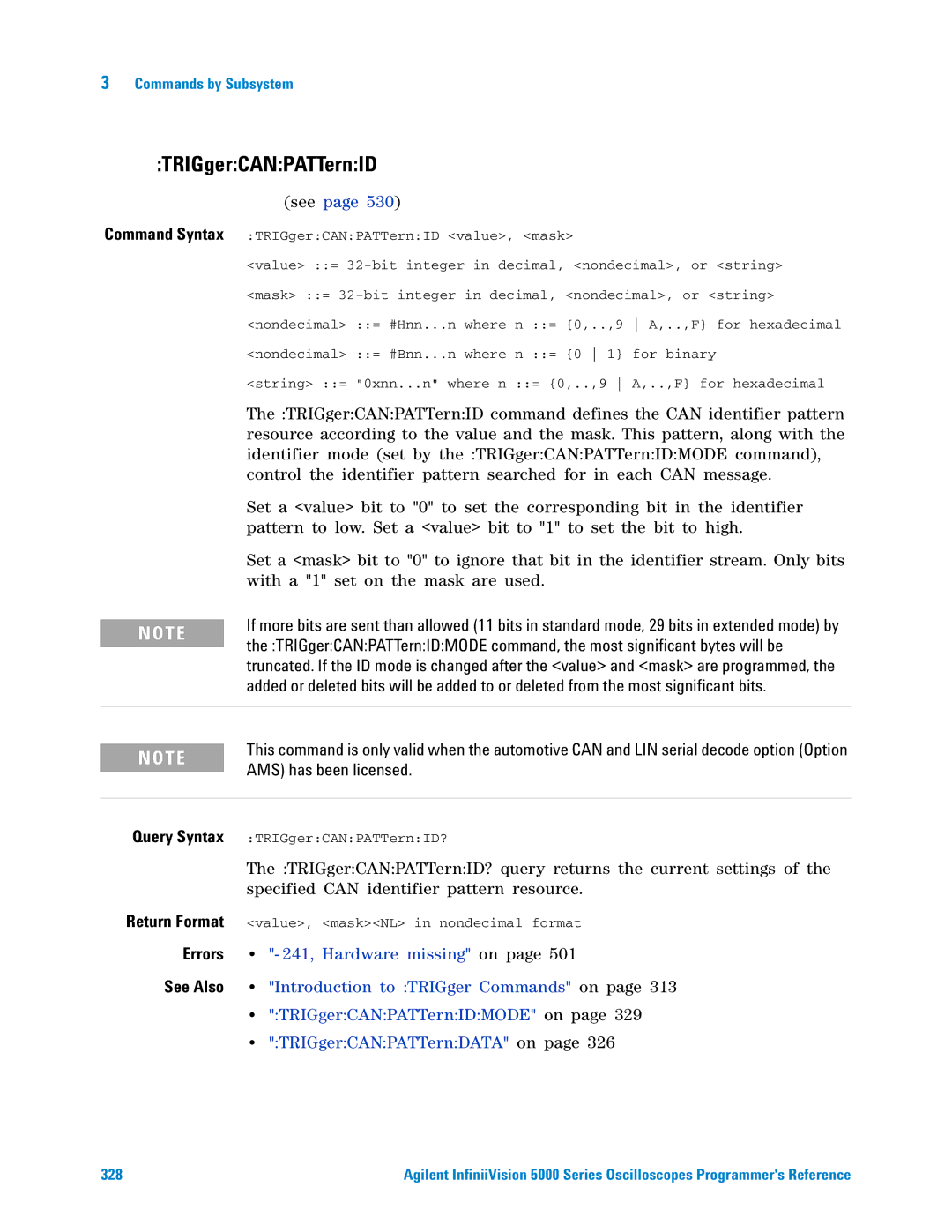3Commands by Subsystem
:TRIGger:CAN:PATTern:ID
(see page 530)
Command Syntax :TRIGger:CAN:PATTern:ID <value>, <mask>
<value> ::=
<string> ::= "0xnn...n" where n ::= {0,..,9 A,..,F} for hexadecimal
|
| The :TRIGger:CAN:PATTern:ID command defines the CAN identifier pattern |
|
| resource according to the value and the mask. This pattern, along with the |
|
| identifier mode (set by the :TRIGger:CAN:PATTern:ID:MODE command), |
|
| control the identifier pattern searched for in each CAN message. |
|
| Set a <value> bit to "0" to set the corresponding bit in the identifier |
|
| pattern to low. Set a <value> bit to "1" to set the bit to high. |
|
| Set a <mask> bit to "0" to ignore that bit in the identifier stream. Only bits |
|
| with a "1" set on the mask are used. |
|
| If more bits are sent than allowed (11 bits in standard mode, 29 bits in extended mode) by |
N O T E |
| |
| the :TRIGger:CAN:PATTern:ID:MODE command, the most significant bytes will be | |
|
| |
|
| truncated. If the ID mode is changed after the <value> and <mask> are programmed, the |
|
| added or deleted bits will be added to or deleted from the most significant bits. |
|
|
|
|
| This command is only valid when the automotive CAN and LIN serial decode option (Option |
N O T E |
| |
| AMS) has been licensed. | |
|
| |
|
| |
Query Syntax | :TRIGger:CAN:PATTern:ID? | |
|
| The :TRIGger:CAN:PATTern:ID? query returns the current settings of the |
|
| specified CAN identifier pattern resource. |
Return Format | <value>, <mask><NL> in nondecimal format | |
Errors | • "- 241, Hardware missing" on page 501 | |
See Also | • "Introduction to :TRIGger Commands" on page 313 | |
|
| • ":TRIGger:CAN:PATTern:ID:MODE" on page 329 |
|
| • ":TRIGger:CAN:PATTern:DATA" on page 326 |
328 | Agilent InfiniiVision 5000 Series Oscilloscopes Programmer's Reference |
